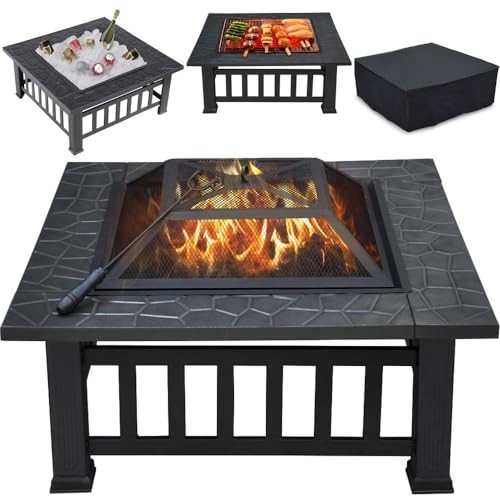Traditional Fireplaces UK Explained In Fewer Than 140 Characters
The Timeless Appeal of Traditional Fireplaces in the UK
Traditional fireplaces have actually long been essential to homes throughout the United Kingdom, going beyond simple utility to become focal points of warmth, convenience, and aesthetic charm. This short article looks into the enduring appeal of traditional fireplaces, exploring their history, design variations, setup factors to consider, and their modern-day relevance.
Historical Significance of Fireplaces
The fireplace has played a central function in British homes considering that middle ages times. Initially, they were necessary for heating and cooking. Over the centuries, with the development of main heating and technological improvements, fireplaces have transformed into symbols of heritage and design.
Key Historical Milestones
Date
Milestone
Description
12th Century
Intro of Chimneys
Enabled indoor fireplaces to be common, improved ventilation.
16th Century
The Renaissance impact
Fireplaces became more ornamental, showing the era's styles.
18th Century
The Georgian Era
Developed detailed mantels made from wood and stone.
19th Century
Victorian Era
Intro of cast-iron and tiled fireplaces.
20th Century
Decrease and Modern Design
Shift towards gas and electric, with some revival of traditional styles.
Kinds Of Traditional Fireplaces
While contemporary designs concentrate on minimalism, traditional fireplaces frequently exhibit elaborate workmanship and historical significance. Here are some popular types of traditional fireplaces typically discovered in the UK:
Open Hearth Fireplaces
- Characterized by a large opening and generally built from brick or stone.
- Provides a cozy ambiance and the noise of crackling flames.
- Requires a proper flue to redirect smoke outdoors.
Wood-Burning Stoves
- Confined units that burn wood for heat, frequently featuring a glass door.
- More efficient than open hearths, providing better heat retention.
- Available in various styles, from rustic to contemporary.
Cast Iron Fireplaces
- Popular in the Victorian age, known for ornate designs.
- Durable and popular for exceptional heat conduction.
- Generally feature detailed patterns or motifs, enhancing visual appeal.
Tiled Fireplaces
- Frequently decorated with ornamental tiles, these fireplaces display creative style.
- Typical in the 19th century, tiles can feature scenes or flower designs.
- Normally coupled with wood or cast iron elements.
Marble Fireplaces
- Renowned for their elegance, these fireplaces are normally personalized.
- Marble uses an elegant finish and matches various interior styles.
- They need mindful setup due to their weight.
Table: Comparison of Traditional Fireplace Types
Fireplace Type
Heat Efficiency
Aesthetic Appeal
Upkeep Needs
Fuel Type
Open Hearth
Low
High
High (chimney cleansing)
Wood
Wood-Burning Stove
High
Moderate
Moderate (wood supply)
Wood
Cast Iron
High
High
Low
Wood/Gas
Tiled
Moderate
Very High
Low (if non-usable)
N/A
Marble
Moderate
Really High
Moderate
N/A
Factors to consider for Installing a Traditional Fireplace
Installing a traditional fireplace can boost a home's character however comes with specific factors to consider. Here are some points homeowners should keep in mind:
Building Regulations: Always examine regional building codes and regulations. Setup might need approval, especially if structural adjustments are required.
Product Selection: Choose products that match the home's architecture and individual design. Consider practicality along with aesthetic appeal.
Ventilation: Ensure appropriate ventilation through a chimney or flue to prevent smoke and gases from collecting indoors.
Safety Precautions: Install carbon monoxide detectors and guarantee all safety procedures remain in location, especially if utilizing wood-burning alternatives.
Professional Installation: Engage a certified contractor to ensure safe and effective installation, following safety requirements.
Advantages of Traditional Fireplaces
Regardless of the increase of modern heating options, traditional fireplaces stay precious for several factors:
Aesthetic Charm
- Includes character to any room.
- Works as a social focal point, boosting events.
Psychological Comfort
- Offers warmth not just physically however mentally.
- Produces a cozy atmosphere ideal for relaxation.
Value Addition to Property
- Boosts the appeal of a home to potential buyers.
- Frequently increases property worth due to their desirability.
Ecological Considerations
- Wood can be an eco-friendly resource when sourced sustainably.
- Traditional fireplaces can contribute less to energy costs compared to electric systems.
Regularly Asked Questions (FAQs)
1. Are traditional fireplaces energy effective?
While traditional fireplaces may not be as energy-efficient as modern heater, improvements in style, such as the setup of glass doors, can boost their performance. Wood-burning ranges are especially known for being more effective than open hearths.
2. How often should traditional fireplaces be cleaned up?
Chimneys need to be examined and cleaned at least when each year, specifically if the fireplace is utilized routinely. This prevents creosote accumulation, which can result in chimney fires.
3. Can I utilize a traditional fireplace for gas heating?
Yes, traditional fireplaces can often be transformed to use gas. Cheap Fireplaces UK includes setting up a gas line and might require a conversion kit depending upon the fireplace design.
4. What are investigate this site fuels for wood-burning fireplaces?
Experienced woods such as oak, hickory, or maple are suggested for wood-burning fireplaces as they burn hotter and longer than softwoods.
5. Can traditional fireplaces be utilized in modern homes?
Definitely! Numerous modern designs incorporate traditional aspects, enabling an unified blend of styles. Furthermore, traditional fireplaces can add an unique touch to contemporary homes.
From their historic significance to their modern-day significance, traditional fireplaces remain a quintessential function in numerous UK homes. Their long-lasting appeal is not only rooted in their functionality but also in the warmth and charm they offer. Whether one go with a classic open hearth or a wonderfully tiled fireplace, the option contributes to creating an inviting environment where memories can be made. As house owners end up being more conscious of looks and nostalgia, traditional fireplaces are poised to preserve their appeal for generations to come.
